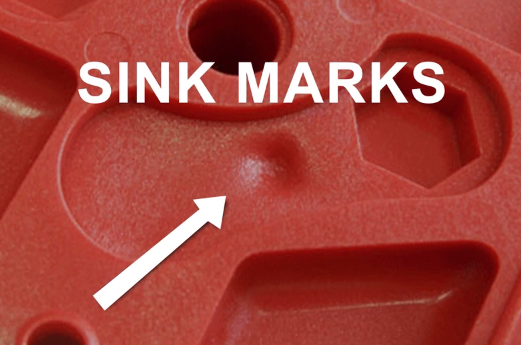Erreur de format d'e-mail
emailCannotEmpty
emailDoesExist
pwdLetterLimtTip
inconsistentPwd
pwdLetterLimtTip
inconsistentPwd

Offer Technical Support and Customized Solutions
The company is committed to creating new and improved plastic materials to meet the evolving demands of the market.

Troubleshooting Sink Marks in Injection Molded Products
Troubleshooting Sink Marks in Injection Molded Products: Insights for Engineered Plastic Resins and Choosing the Right Plastic Granules Supplier
Hey there! Are you familiar with sink marks (also known as "Sink Marks") on the surface of injection molded products? They're pretty common during the injection molding process. Sink marks occur when there is localized shrinkage caused by insufficient material injection. These depressions often appear near external corners or areas with varying wall thickness.
So, what's the root cause of sink marks? The culprit is the thermal expansion and contraction of the material. But don't worry, there are ways to analyze and eliminate this pesky issue! Let's explore some common causes and their solutions:
1️⃣ Equipment defects:
If the nozzle hole of the injection molding machine is too small or partially blocked, it can result in excessive local loss of injection pressure, leading to sink marks. In such cases, replacing or cleaning the nozzle is the way to go.
2️⃣ Mold defects:
Improper or flawed mold designs can also cause sink marks on the surface of plastic parts. Some common design flaws include narrow flow paths and gate sections, asymmetric gate placement, improper positioning of the sprue, poor mold venting affecting feeding, packing, and cooling, as well as excessive mold wear. To address these issues, it's important to take specific measures such as appropriately enlarging gate and runner sections, positioning gates symmetrically on the product, and placing the sprue at thick-walled areas of the plastic part.
3️⃣ Improper process conditions:
Improper process conditions can lead to sink marks on the surface of plastic parts. For example, low injection pressure, short injection and holding times, slow injection rate, excessive melt and mold temperatures, inadequate part cooling, high demolding temperatures, and low temperatures at core areas can all contribute to the appearance of sink marks or a slight texture resembling orange peel. Therefore, adjusting the injection pressure and speed, extending injection and holding times, and compensating for melt shrinkage are recommended. Additionally, insufficient cooling within the mold can also result in sink marks. Lowering the barrel temperature and adjusting the cooling water temperature can be effective remedies.
4️⃣ Inadequate material properties:
If the plastic material has a high shrinkage rate, poor flowability, insufficient internal lubrication, or moisture content, it can lead to surface sink marks on the molded parts. To tackle this issue, it's vital to choose the right engineered plastic resins as raw materials. This requires working with a reliable plastic granules supplier who can provide high-quality resins with consistent properties. By partnering with a reputable supplier, you can ensure that the engineered plastic resins meet the required specifications, including shrinkage rate, flowability, and lubrication.
By addressing these common causes and implementing appropriate solutions while considering the quality of engineered plastic resins and the credibility of your plastic granules supplier, it's possible to minimize or even eliminate sink marks in injection molded products. Remember, a combination of careful design, proper equipment maintenance, optimal process conditions, and suitable material selection is key to achieving high-quality, sink mark-free plastic components.
https://www.toponew.com/products

